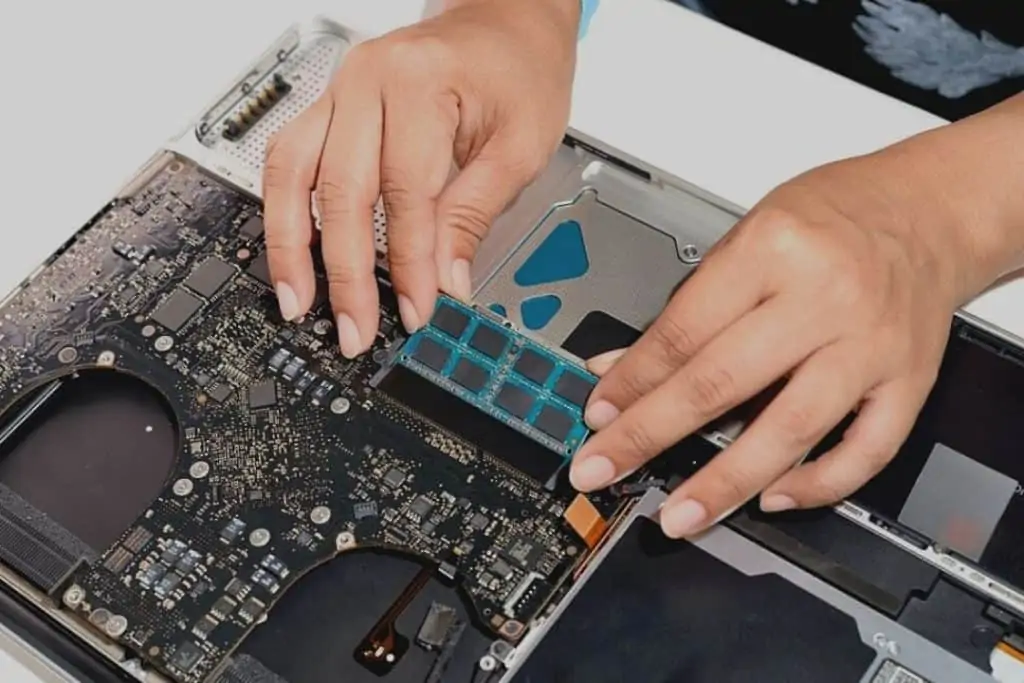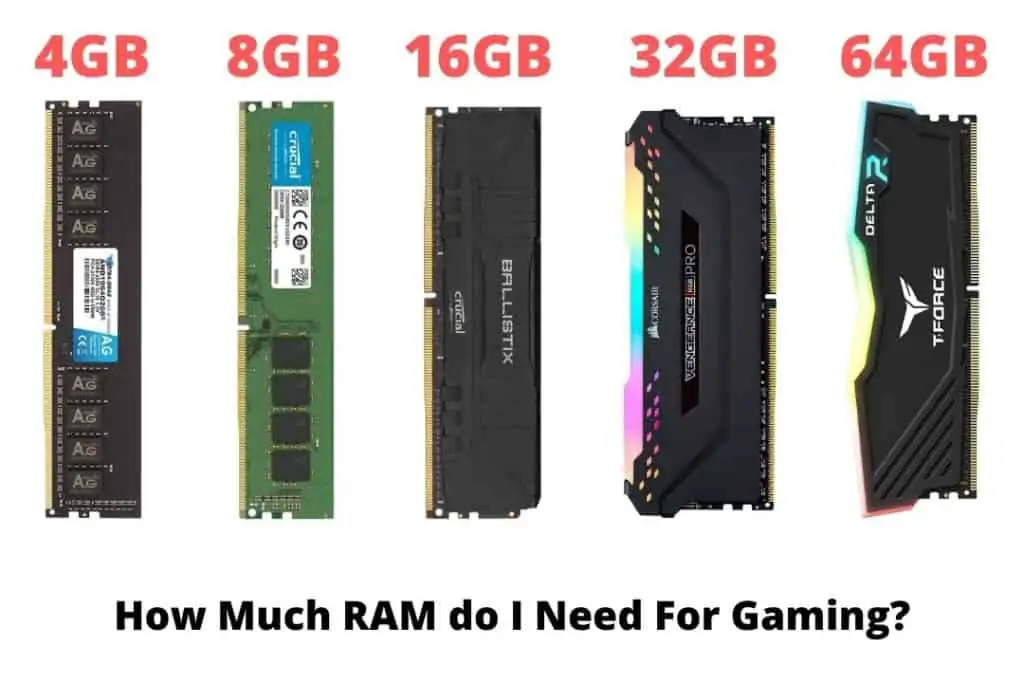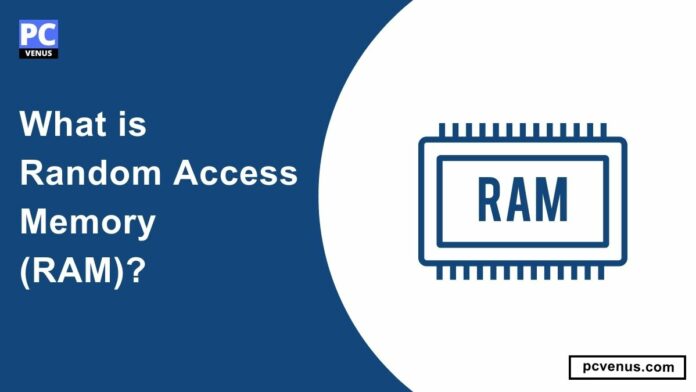RAM is now a very familiar word, and it stands for random access memory. It is a hardware device usually located on a computer’s motherboard and serves as the internal memory of the CPU.
All applications we use on mobile phones or PCs need to activate the memory.
All active tasks and applications need a temporary space to load into so that the processor can quickly obtain the data required to run the application.
The CPU can directly access RAM to perform many tasks, which is the computer’s main memory.
Reading or writing data in RAM is much faster than other types of storage (such as hard drives, solid-state drives, or optical drives).
RAM is very fast, compared to hard disk or SSD storage; you can even call it a hundred times faster depending on specific tasks and workloads.
The speed of RAM’s collection of information is breakneck, and it will automatically become temporary storage.
It is volatile, which means that when you connect a current to it, it will work, and if you turn it off, it will revert to its initial state.
When choosing and buying RAM for your laptop computer, you’ll probably see two different terms: speed and generation.
What does RAM do, and how does it work?

The RAM is the short-term memory of our computer. RAM saves temporary data when we perform work, and the same data can be accessed in random order, but sequential access is impossible.
It provides a working space for any application to run. Whenever we open an application on a mobile phone or PC, it will be loaded from the hard disk into RAM for easy and quick access to the data related to the application.
It can prevent repeatedly loading data from the hard disk, which is time-consuming.
It is a memory that allows multiple applications to run together without any delay. In other words, RAM makes our system faster. Running a mobile phone or PC efficiently and smoothly is almost impossible without RAM.
Different Types of RAM
Static Random Access Memory (SRAM):
The short form of static random access memory is SRAM, which is composed of memory cells. Multiple transistors are used to make each memory cell, but do not have a capacitor in each cell.
This kind of memory requires continuous power to store data, meaning data preservation will be impossible without constant power.
SRAM is volatile, which means that your stored data will be lost with no current or power.
It is mainly used to make caches. Due to continuous power supply and no need for a regular refresh, it is called static RAM.
Advantages:
- SRAM is simple and easy to handle.
- It has good data access speed. It is reliable, so it is used for caching.
Disadvantages:
- It is a volatile memory, so all data will be lost once the power is turned off.
- SRAM has a lower storage capacity and takes up more space.
- It is more expensive than DRAM.
Dynamic Random Access Memory (DRAM):
The Full form of DRAM is dynamic random access memory. It uses transistors and capacitors to create a memory cell that can represent one bit of data. Therefore, capacitors store data or information in dynamic random access memory.
As we all know, capacitors tend to discharge continuously, which begins losing the information within milliseconds, implying that they cannot keep data for an extended period even when constantly powered.
As a result, it must be refreshed dynamically, which is dynamic random access memory.
DRAM is also a volatile memory, which means that all recorded data is lost once the power is turned off. This memory is typically used to generate considerable system RAM space.
Advantages:
- DRAM is created using a basic approach that employs a single transistor.
- It can store a large amount of data.
- It necessitates a small amount of space.
Disadvantages:
- Its accessing speed is much slower than that of SRAM.
- It goes through a complicated production procedure. Because it is a volatile memory, all data is lost when the power is turned off.
Speed of a RAM
The speed of RAM is measured in megahertz (MHz). The faster your computer can access your data, the greater the frequency. The more RAM you have, the faster your processor can operate applications and programs.
The speedier the computer RAM is, the better. Because RAM runs on clock cycles rather than other types of memory, the greater the frequency, the better each write and read cycle takes one cycle, and the faster the RAM is, the more cycles it has.
Generation of a RAM
The generation refers to how quickly data may be transferred in a RAM. Ideally, you should select a fast enough RAM to meet your requirements. The quantity of space it takes up might inform you what type of RAM you have. You can also have a peek at how much power it uses.
| Generation | Speed ( In MHz ) |
|---|---|
| DDR | 200-400 |
| DDR2 | 400-1066 |
| DDR3 | 800-2133 |
| DDR4 | 1600-3200 |
| DDR5 | 3200-6400 |
| LPDDR | 4266-6400 |
Difference between SRAM and DRAM
| Sl no | Static RAM | Dynamic RAM |
| 1 | It is a static memory as it does not need to be refreshed repeatedly. | It is a dynamic memory as it needs to be refreshed continuously or it will lose the data. |
| 2 | SRAM is faster compared to DRAM. | DRAM is slow as compared to SRAM. |
| 3 | These are used in Cache memories. | These are used in main memories. |
| 4 | These are expensive. | These are cheaper. |
| 5 | Transistors are used to store data. | Capacitors are used to store data. |

How Much RAM Do I Need?
When buying a smartphone or laptop, everyone thinks about how much memory we need to get the best performance.
Is it not?
Modern PCs usually have 2GB to 64GB of memory, but some have more. How much memory do you need for your PC?
Having more RAM than the minimum is essential for performing every task. We must have at least the amount of RAM required to run the operating system effectively.
But users often need more RAM than the operating system, depending on what they want to do with their PC or mobile phone.
In the background, the PC executes the current application and performs other services and tasks. However, having a lot of system memory does not always mean that the PC will run faster.
Multitasking requires a lot of RAM, such as 8GB, 16GB, or more. If the RAM is too low, the user will not be able to run multiple applications smoothly.
This means that the user has to reload the application every time they switch programs.
A PC with 4GB memory can perform basic operations and run essential software, but it may not run smoothly.
A laptop with 4GB of RAM is not enough to play modern games like Roblox, Fortnite, etc. At least 8GB of RAM is required for casual games, but this may not be enough to provide optimal performance in demanding games.
Any laptop with 16GB of memory can efficiently complete all of these activities, from daily work to heavy tasks such as video editing, modern games, and AutoCAD.
Nowadays, 32GB of RAM is enough to provide an excellent and smooth gaming experience. All other reasonably sized applications will run smoothly, allowing you to enjoy the seamless operation of your computer.
PCs with higher RAM (64 GB and more) are also available, which can be used as needed.
FAQs
Yes, RAM can affect gaming performance, especially in games with high system requirements. The more RAM you have, the more data your computer can store and access faster. Some games require more RAM, as they have more complex graphics and larger open-world environments.
For example, games like Cyberpunk 2077, Red Dead Redemption 2 and Assassin’s Creed Valhalla have nice pictures and large worlds that require a lot of RAM. These games have more details and elements that your computer needs to remember and display.
ROM means read-only memory. It permanently stores important startup data such as BIOS and operating system. ROM cannot be changed or erased.
RAM stands for Random Access Memory. It temporarily stores the programs and files you are actively using. RAM can be replaced and erased when the power is turned off.
You can free up some RAM by closing tasks you don’t use, such as browser tabs and apps. These things use some RAM to run in the background, so turning them off will make more RAM available for other tasks. Turning your computer off and on will also free up some RAM by clearing the memory of unnecessary data.
Final Words
Memory is critical to the performance of your PC or phone. It determines how fast and smoothly your device runs. This article explains what memory is, how it works, and how much of it you need for different uses.
We discussed the importance of getting the right memory and offered tips for choosing the best type for your needs. The goal was to help you see why memory matters and how to optimize it.
With enough memory, your PC or phone can work faster and handle more tasks with ease. Subscribe to our newsletter for more tech advice.




